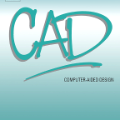The integration of Artificial Intelligence (AI) and Digital Pathology has been increasing over the past years. Nowadays, applications of deep learning (DL) methods to diagnose cancer from whole-slide images (WSI) are, more than ever, a reality within different research groups. Nonetheless, the development of these systems was limited by a myriad of constraints regarding the lack of training samples, the scaling difficulties, the opaqueness of DL methods, and, more importantly, the lack of clinical validation. As such, we propose a system designed specifically for the diagnosis of colorectal samples. The construction of such a system consisted of four stages: (1) a careful data collection and annotation process, which resulted in one of the largest WSI colorectal samples datasets; (2) the design of an interpretable mixed-supervision scheme to leverage the domain knowledge introduced by pathologists through spatial annotations; (3) the development of an effective sampling approach based on the expected severeness of each tile, which decreased the computation cost by a factor of almost 6x; (4) the creation of a prototype that integrates the full set of features of the model to be evaluated in clinical practice. During these stages, the proposed method was evaluated in four separate test sets, two of them are external and completely independent. On the largest of those sets, the proposed approach achieved an accuracy of 93.44%. DL for colorectal samples is a few steps closer to stop being research exclusive and to become fully integrated in clinical practice.
翻译:过去几年来,人工智能(AI)和数字病理学的整合程度一直在不断提高。如今,不同研究组内部比以往更加现实地采用深学习(DL)方法从全滑动图像中诊断癌症,而不同研究组内部却比以往更加现实。尽管如此,这些系统的开发却因缺乏培训样本、规模困难、DL方法的不透明性以及更重要的是临床鉴定的缺乏等诸多制约因素而受到限制。因此,我们建议专门设计一个用于诊断色切样本的系统。这种系统的构建由四个阶段组成:(1) 仔细的数据收集和批注过程,导致产生最大的WSI色切采样数据集之一;(2) 设计一个可解释的混合监督计划,以利用病理学家通过空间说明引进的域知识;(3) 根据每块的预期严重性,开发一个有效的取样方法,将计算成本降低近6x倍;(4) 创建一个将模型集成模型,将模型的全套特点纳入供临床实践评估的色切性做法中,这四个阶段是提议的外部检验方法,在临床实践中完全实现。在四个阶段,拟议采用最接近的测试方法。在四个阶段,在进行最接近的外部检验后,在四个阶段内将完全地进行测试。




